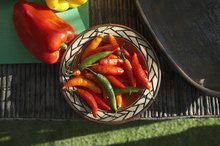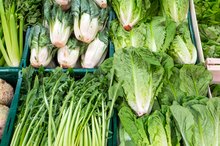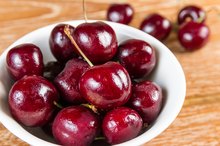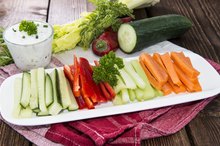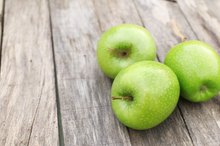Green Chile Nutrition
The green chile, also known as the Anaheim or New Mexico chile, is a member of the Capsicum family. Green chiles are one of the most widely available chile peppers in the U.S., and can be purchased fresh or canned. Green chiles have a mild, sweet flavor and much less bite than other varieties of chile pepper. Green chile peppers provide a variety of essential nutrients including vitamin C, vitamin A and potassium.
Description
The green or Anaheim chile is named after the California city, and is commonly used to make chile rellenos and salsa. New Mexico green chiles are spicier varieties of Anaheim chiles. Green chile peppers are long, narrow and bright green. A 1/2 cup serving of raw green chile peppers has 30 calories.
- The green or Anaheim chile is named after the California city, and is commonly used to make chile rellenos and salsa.
- New Mexico green chiles are spicier varieties of Anaheim chiles.
Macronutrients
Fiddlehead Ferns Nutrition
Learn More
Green chiles are mostly water; however, they also provide some protein and carbohydrates. A 1/2 cup serving of raw green chile peppers provides 1.5 grams of protein, 0.15 grams of fat, 7.1 grams of carbohydrates and 1.1 gram of fiber. The National Academies' Institute of Medicine recommends adults consume between 46 and 56 grams of protein daily and 25 to 38 grams of dietary fiber 2.
Vitamins
Green chile peppers are an excellent source of vitamin C. Your body needs vitamin C to synthesize collagen, a structural component of ligaments, tendons and blood vessels. A 1/2 cup serving of raw green chile peppers provides 181.9 milligrams of vitamin C, double the daily amount recommended for adults. Green chile peppers are also very high in vitamin A, essential for healthy hair, skin and eyes. A 1/2 cup serving of raw green chiles provides 29 percent of the recommended amount of vitamin A for men and 38 percent for women.
- Green chile peppers are an excellent source of vitamin C. Your body needs vitamin C to synthesize collagen, a structural component of ligaments, tendons and blood vessels.
- Green chile peppers are also very high in vitamin A, essential for healthy hair, skin and eyes.
Minerals
Green Pepper Nutrition Information
Learn More
Green chile peppers are a source of potassium, an electrolyte essential for maintaining fluid balance in and outside of cells. A 1/2 cup serving of raw, green chile peppers provides 255 milligrams of potassium. Adults need 4,700 milligrams of potassium daily, as recommended by the National Academies' Institute of Medicine. Green chile peppers are also a source of iron, providing 11 percent of the recommended amount for men and 5 percent for women, per 1/2 cup.
- Green chile peppers are a source of potassium, an electrolyte essential for maintaining fluid balance in and outside of cells.
- Green chile peppers are also a source of iron, providing 11 percent of the recommended amount for men and 5 percent for women, per 1/2 cup.
Considerations
Fresh green chile peppers are available seasonally at most grocery stores, and are available canned year round. When purchasing fresh green chiles, choose peppers that are firm and deep in color, avoiding peppers that are wrinkled or soft. As green chiles mature, they will turn from green to red. Fresh green chiles can be stored in the refrigerator for up to a week or frozen for a year.
- Fresh green chile peppers are available seasonally at most grocery stores, and are available canned year round.
- Fresh green chiles can be stored in the refrigerator for up to a week or frozen for a year.
Related Articles
References
- USDA National Nutrient Database for Standard Reference: Peppers, hot chili, green, raw
- Purdue University: Capsicums: Innovative Uses of an Ancient Crop
- "Advanced Nutrition and Human Metabolism"; James L. Groff, Sareen S. Gropper; 2000
Writer Bio
Based in Austin, Texas, Kara McEvoy has been writing professionally since 2007. She worked for three years as a public health nutritionist with the Vermont Department of Health, where she wrote nutrition-related articles for "The St. Albans Messenger." McEvoy holds a Bachelor of Science in nutrition and food science from the University of Vermont.




